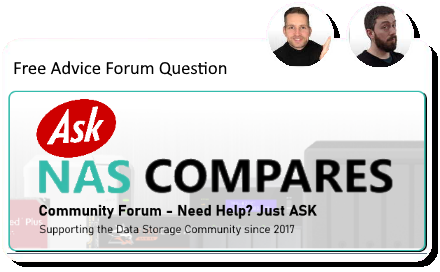08-29-2025, 03:48 PM
You’re absolutely right to question this — using Lightroom over Tailscale (or any VPN) can massively slow things down, especially with large RAW files and when working directly off network shares. Lightroom isn’t really optimized for high-latency or bandwidth-limited environments like that.
A few key points:
1. Yes, performance drops are normal over Tailscale
Tailscale is fantastic for secure remote access, but it introduces latency and can’t match local network speeds. Loading RAW previews, editing, and exporting all require heavy disk reads and writes, and over a VPN that’s going to feel very sluggish.
2. The Lightroom catalog should stay local
It’s good you kept the .lrcat catalog on the laptop — this is essential. But if your actual image files are stored on the NAS and you’re accessing them live over Tailscale, Lightroom will still crawl.
⸻
What you can do:
A. Sync photos locally before editing (best option)
Set up a sync system where you download/sync the current project folder to the local SSD of the laptop before editing. After edits, you can copy/sync the updated files back to the NAS.
Options for sync:
• Synology Drive Client (with selective sync)
• Resilio Sync (for peer-to-peer sync, very fast)
• Syncthing (if you prefer open source)
This way, all Lightroom work is done locally at full SSD speeds, and the NAS acts more like a central archive rather than a live workspace.
B. Use SMB over Tailscale, not QuickConnect/WebDAV
If you absolutely must work over VPN, make sure you’re connecting to the NAS via SMB (shared folder mapping) rather than using Synology Drive, WebDAV, or QuickConnect. SMB is still slow over VPN but performs better than those options.
C. Enable thumbnail caching on the NAS
On the NAS, in File Station > Settings > General > Enable thumbnail caching, make sure this is turned on. While it won’t speed up Lightroom directly, it helps with preview loading in general file browsing.
⸻
Data safety
Any of these approaches (especially syncing) won’t compromise data safety as long as you:
• Keep backups of the original files (ideally via Hyper Backup or Snapshot Replication on the NAS).
• Avoid making live edits to images over the VPN.
• Keep catalog backups separate from the image library.
A few key points:
1. Yes, performance drops are normal over Tailscale
Tailscale is fantastic for secure remote access, but it introduces latency and can’t match local network speeds. Loading RAW previews, editing, and exporting all require heavy disk reads and writes, and over a VPN that’s going to feel very sluggish.
2. The Lightroom catalog should stay local
It’s good you kept the .lrcat catalog on the laptop — this is essential. But if your actual image files are stored on the NAS and you’re accessing them live over Tailscale, Lightroom will still crawl.
⸻
What you can do:
A. Sync photos locally before editing (best option)
Set up a sync system where you download/sync the current project folder to the local SSD of the laptop before editing. After edits, you can copy/sync the updated files back to the NAS.
Options for sync:
• Synology Drive Client (with selective sync)
• Resilio Sync (for peer-to-peer sync, very fast)
• Syncthing (if you prefer open source)
This way, all Lightroom work is done locally at full SSD speeds, and the NAS acts more like a central archive rather than a live workspace.
B. Use SMB over Tailscale, not QuickConnect/WebDAV
If you absolutely must work over VPN, make sure you’re connecting to the NAS via SMB (shared folder mapping) rather than using Synology Drive, WebDAV, or QuickConnect. SMB is still slow over VPN but performs better than those options.
C. Enable thumbnail caching on the NAS
On the NAS, in File Station > Settings > General > Enable thumbnail caching, make sure this is turned on. While it won’t speed up Lightroom directly, it helps with preview loading in general file browsing.
⸻
Data safety
Any of these approaches (especially syncing) won’t compromise data safety as long as you:
• Keep backups of the original files (ideally via Hyper Backup or Snapshot Replication on the NAS).
• Avoid making live edits to images over the VPN.
• Keep catalog backups separate from the image library.




